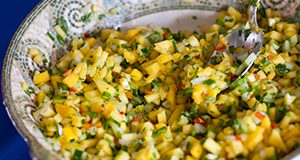Muchos recursos sobre la diabetes se encuentra en línea.
This 2-page fact sheet provides a list of resources with information on diabetes. Written by Linda B. Bobroff and Paulina Wittkowsky, and published by the UF Department of Family, Youth and Community Sciences, revised August 2015.
http://edis.ifas.ufl.edu/fy083
Author: Amanda Quintos
Healthy Eating: Meals Without Cooking
This 2-page fact sheet is a major revision featuring a fun word search and a delicious recipe that requires no cooking. Written by Linda B. Bobroff, and published by the UF Department of Family, Youth and Community Sciences, revised July 2016.
http://edis.ifas.ufl.edu/fy1215
Caregivers, Caseworkers, and Biological Parents: Risk Factors for Foster Teen Pregnancy and Ways You Can Make a Difference
Many teens exhibit risk-taking behavior. That said, the past experiences of foster care youth in particular make them likely to engage in activity that could cause teen pregnancy and sexually transmitted infections. This 9-page fact sheet is designed to provide kin and foster caregivers, caseworkers, and biological parents of children in foster care with information about the physical, emotional, and psychological concerns related to teen reproductive health in the foster care system. It also aims to help all involved identify the risk factors associated with foster teen pregnancy and explains legal rights regarding foster teen health. Written by Nora Del Giudice, Stephanie C. Toelle, David C. Diehl, and Jody S. Nicholson, and published by the UF Department of Family, Youth and Community Sciences, May 2016.
http://edis.ifas.ufl.edu/fy1464
Healthy Eating: Fluids
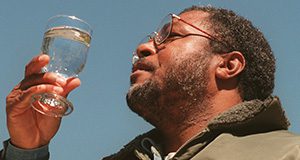 More than one-half of an adult’s body weight is water. Water brings nutrients to the cells in our bodies and removes waste. Our bodies cannot function if they do not receive enough water. This 2-page fact sheet is a major revision that addresses the importance of water to physical functions, effects of dehydration, risk factors for dehydration in older adults, and fluid intake suggestions. Written by Linda B. Bobroff, and published by the UF Department of Family, Youth and Community Sciences, revised June 2016.
More than one-half of an adult’s body weight is water. Water brings nutrients to the cells in our bodies and removes waste. Our bodies cannot function if they do not receive enough water. This 2-page fact sheet is a major revision that addresses the importance of water to physical functions, effects of dehydration, risk factors for dehydration in older adults, and fluid intake suggestions. Written by Linda B. Bobroff, and published by the UF Department of Family, Youth and Community Sciences, revised June 2016.
http://edis.ifas.ufl.edu/fy070
Fall Prevention: Home Safety Inventory
 Most falls occur in the home, so it is wise to take time to do a home safety inventory. This 2-page fact sheet is a major revision that can be used to identify problem areas in your home. Written by Linda B. Bobroff, and published by the UF Department of Family, Youth and Community Sciences, revised July 2016.
Most falls occur in the home, so it is wise to take time to do a home safety inventory. This 2-page fact sheet is a major revision that can be used to identify problem areas in your home. Written by Linda B. Bobroff, and published by the UF Department of Family, Youth and Community Sciences, revised July 2016.
http://edis.ifas.ufl.edu/fy735
Diabetes-Related Websites
Managing diabetes requires learning about your disease, making positive lifestyle choices, and being a partner with your health care team. Finding and using current and reliable sources of health information on the Internet also helps you make choices that support your health while avoiding potentially harmful products and practices. This 1-page fact sheet is a major revision that provides links to government, educational, and recognized professional websites on diabetes. Written by Linda B. Bobroff and Nancy J. Gal, and published by the UF Department of Family, Youth and Community Sciences. Revised May 2016.
http://edis.ifas.ufl.edu/fy1103
Vivir con Diabetes
La diabetes es una enfermedad que afecta a más de 29 millones de estadounidenses. Aunque no existe cura para tipo 1 o tipo 2 diabetes, con los cuidados necesarios se puede controlar la enfermedad.
This 5-page fact sheet is the Spanish version of Living with Diabetes. This major revision provides an overview of diabetes, a list of people at high risk of developing the disease, and a description of each type of diabetes. It also discusses tests, possible health problems, control of blood glucose, and diabetes management. Written by Nancy J. Gal and Linda B. Bobroff, and published by the UF Department of Family, Youth and Community Sciences, revised May 2016.
http://edis.ifas.ufl.edu/fy924
Cressleaf Groundsel (Butterweed) Identification and Management in Pastures
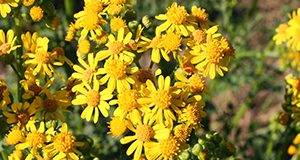 Butterweed is a winter annual that is toxic to both cattle and horses. This 2-page fact sheet provides an overview of the plant as well as herbicide recommendations. Written by Brent Sellers and Jay Ferrell, and published by the UF Agronomy Department, May 2016.
Butterweed is a winter annual that is toxic to both cattle and horses. This 2-page fact sheet provides an overview of the plant as well as herbicide recommendations. Written by Brent Sellers and Jay Ferrell, and published by the UF Agronomy Department, May 2016.
http://edis.ifas.ufl.edu/ag406
Healthy Living: Taking Care from Head to Toe
If you have diabetes, pay special attention to your skin, eyes, teeth, gums, and feet. These areas are at high risk for complications. This 3-page fact sheet is a major revision that gives helpful information on ways to take care of these areas to reduce the risk of diabetes-related complications. Written by Linda B. Bobroff, and published by the UF Department of Family, Youth and Community Sciences, revised May 2016.
http://edis.ifas.ufl.edu/fy886
Carinata, the Jet Fuel Cover Crop: 2016 Production Recommendations for the Southeastern United States
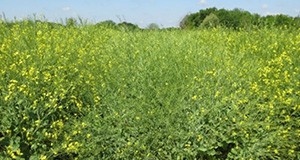
Carinata has been grown commercially for several years on the Canadian prairie and more recently in the US northern plains as a summer crop. For the past four years, UF has been conducting research to evaluate various management practices that allow incorporation of carinata into current cropping systems as a winter crop with minimal modification to existing infrastructure in the southeastern US. This 8-page fact sheet is a major revision that discusses carinata characteristics, biology, nutrient management, tillage, variety selection, planting dates, seeding depth, seeding rate, row spacing, weed management, disease management, insect management, harvest management, economics, and crop insurance. Written by Ramdeo Seepaul, Christine M. Bliss, David L. Wright, Jim J. Marois, Ramon G. Leon, Nicholas Dufault, Sheeja George, and Steve M. Olson, and published by the UF Agronomy Department, December 2014. Revised October 2015.
http://edis.ifas.ufl.edu/ag389
Guide to Olive Tree Nutrition in Florida
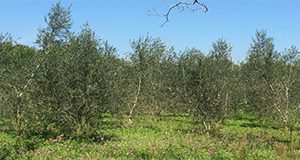 A burgeoning olive industry already exists in the southeastern United States, but research and Extension information regarding olive fertilization recommendations in Florida is limited. While there are data and recommendations for olive from the University of California, the University of Georgia (UGA), and other institutions around the world, there are no data from which we can derive Florida-specific recommendations. This 6-page fact sheet uses many of the existing recommendations for mature, high-density, and traditional grove spacing as guidelines until data specific to Florida production are generated. It discusses leaf tissue sampling procedures, leaf tissue sufficiency ranges, nitrogen fertility, phosphorus and potassium fertility, boron, concerns for olive production in Florida, and other resources for olive production in the state. Written by Michael J. Mulvaney, Rao Mylavarapu, Peter C. Andersen, Mack Thetford, and Jennifer L. Gillett-Kaufman, and published by the UF Agronomy Department, May 2016.
A burgeoning olive industry already exists in the southeastern United States, but research and Extension information regarding olive fertilization recommendations in Florida is limited. While there are data and recommendations for olive from the University of California, the University of Georgia (UGA), and other institutions around the world, there are no data from which we can derive Florida-specific recommendations. This 6-page fact sheet uses many of the existing recommendations for mature, high-density, and traditional grove spacing as guidelines until data specific to Florida production are generated. It discusses leaf tissue sampling procedures, leaf tissue sufficiency ranges, nitrogen fertility, phosphorus and potassium fertility, boron, concerns for olive production in Florida, and other resources for olive production in the state. Written by Michael J. Mulvaney, Rao Mylavarapu, Peter C. Andersen, Mack Thetford, and Jennifer L. Gillett-Kaufman, and published by the UF Agronomy Department, May 2016.
http://edis.ifas.ufl.edu/ag405
Spiderwort Control in Hay Fields and Pastures
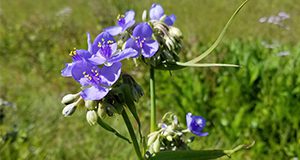
Spiderwort is a native perennial species found throughout the eastern half of the US. The plant’s large, fleshy stem creates problems for hay production. This 2-page fact sheet provides a brief overview of the plant as well as information on control through herbicide use. Written by Michael Durham, Jason Ferrell, and Brent Sellers, and published by the UF Agronomy Department, May 2016.
http://edis.ifas.ufl.edu/ag407
Hydrilla: Florida's Worst Submersed Weed
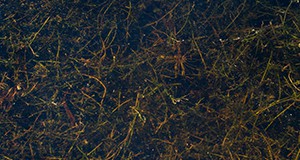
Hydrilla, which was originally introduced to the state as an aquarium plant, was intentionally planted in canals by aquarium plant dealers in the 1950s and quickly escaped cultivation. In addition to being one of the world’s worst aquatic weeds, the species is Florida’s most intensively managed submersed plant. Hydrilla is a federally listed noxious weed and a prohibited aquatic plant in Florida, making cultivation, sale, and possession of the species illegal. This 7-page fact sheet discusses the classification, characteristics, habitat, and management of hydrilla. Written by Lyn A. Gettys and Stephen F. Enloe, and published by the UF Agronomy Department, February 2016.
http://edis.ifas.ufl.edu/ag404
Healthy Eating: Improving Your Convenience Foods
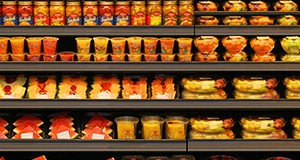 Convenience foods are foods that require little preparation. Some convenience foods only require heating and are ready to eat in less than five minutes! The majority of convenience foods are processed foods. However, precut, prewashed, frozen, and canned fruits and vegetables also can be classified as convenience foods. They are healthy foods but are usually more expensive than less prepared fresh fruits and vegetables. This 2-page fact sheet is a major revision that discusses pros and cons of convenience foods, improvement of nutritional quality, common convenience foods and easy additions, and additional tips. Written by Emily Minton and Linda B. Bobroff, and published by the UF Department of Family, Youth and Community Sciences, revised March 2016.
Convenience foods are foods that require little preparation. Some convenience foods only require heating and are ready to eat in less than five minutes! The majority of convenience foods are processed foods. However, precut, prewashed, frozen, and canned fruits and vegetables also can be classified as convenience foods. They are healthy foods but are usually more expensive than less prepared fresh fruits and vegetables. This 2-page fact sheet is a major revision that discusses pros and cons of convenience foods, improvement of nutritional quality, common convenience foods and easy additions, and additional tips. Written by Emily Minton and Linda B. Bobroff, and published by the UF Department of Family, Youth and Community Sciences, revised March 2016.
http://edis.ifas.ufl.edu/fy1312
School Gardens: A Growing Part of Schools

School gardens have been popping up like little pea plants in schools all over Florida. Not only are they an excellent way to get fresh produce into classrooms and cafeterias, but they also provide students with a living classroom where concepts related to science, math, agriculture, and nutrition can be learned and applied. This 4-page fact sheet discusses the benefits of school gardens to children and teachers, different types of school gardens, and points to consider while planning. Written by Kohrine Counts and Karla P. Shelnutt, and published by the UF Department of Family, Youth and Community Sciences, February 2016.
http://edis.ifas.ufl.edu/fy1463
Nitrogen Fertilizer Recommendations for Sugarcane Production for Sugar on Florida Sand Soils
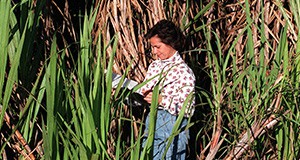
Sands used in sugarcane production in Florida have low levels of organic matter, silt, and clay, and they provide little N through mineralization of organic matter and possess a low capacity for N retention as a result. Because these soils are highly leachable, N must be managed well to ensure adequate nutrition for the crop as well as protection of groundwater. This new 4-page fact sheet is part of the Sugarcane Handbook, and it discusses sand soils used in sugarcane production, sugar yield response to nitrogen, and revised nitrogen recommendations. Written by J. Mabry McCray, Kelly T. Morgan, and Les Baucum, and published by the UF Agronomy Department, February 2016.
http://edis.ifas.ufl.edu/sc101
Preventing Foodborne and Non-foodborne Illness: Vibrio vulnificus
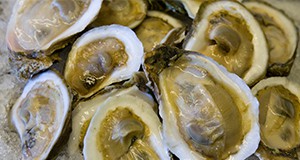 Vibrio vulnificus occurs naturally in warm brackish and saltwater environments. During the warmer months, this bacterium can reach particularly high concentrations in filter-feeding shellfish that inhabit coastal waters. Foodborne illness from V. vulnificus is almost exclusively associated with consumption of raw oysters. This 3-page fact sheet is a major revision that discusses risk of infection, times to seek medical treatment, symptoms, activities related to illness, foods commonly associated with the bacterium, handling and storage of seafood and shellfish, and methods of prevention. Written by Anita C. Wright, Renée M. Goodrich, Michael A. Hubbard, and Keith R. Schneider, and published by the UF Food Science and Human Nutrition Department. Original publication date: July 2009. Revised October 2015.
Vibrio vulnificus occurs naturally in warm brackish and saltwater environments. During the warmer months, this bacterium can reach particularly high concentrations in filter-feeding shellfish that inhabit coastal waters. Foodborne illness from V. vulnificus is almost exclusively associated with consumption of raw oysters. This 3-page fact sheet is a major revision that discusses risk of infection, times to seek medical treatment, symptoms, activities related to illness, foods commonly associated with the bacterium, handling and storage of seafood and shellfish, and methods of prevention. Written by Anita C. Wright, Renée M. Goodrich, Michael A. Hubbard, and Keith R. Schneider, and published by the UF Food Science and Human Nutrition Department. Original publication date: July 2009. Revised October 2015.
http://edis.ifas.ufl.edu/fs147
Culling and Replacement Rate in the Beef Cow Herd
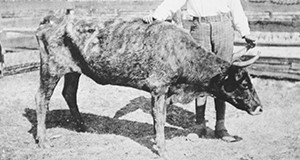 Culling decisions are important to maintain the productivity and profitability of the beef cow herd. Culling of cows from the herd eliminates poorly performing cows, inferior genetics, and cows with quality defects that would limit short- and long-term productivity. This 4-page fact sheet discusses reasons to cull as well as replacement of culled cows. Written by Matt Hersom, Todd Thrift, and Joel Yelich, and published by the UF Department of Animal Sciences, December 2015.
Culling decisions are important to maintain the productivity and profitability of the beef cow herd. Culling of cows from the herd eliminates poorly performing cows, inferior genetics, and cows with quality defects that would limit short- and long-term productivity. This 4-page fact sheet discusses reasons to cull as well as replacement of culled cows. Written by Matt Hersom, Todd Thrift, and Joel Yelich, and published by the UF Department of Animal Sciences, December 2015.
http://edis.ifas.ufl.edu/an323
Shrink in Beef Cattle: A Marketing Consideration
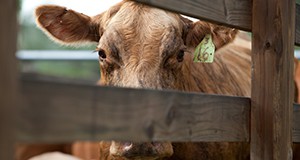 Shrink in beef cattle is weight loss that occurs between an animal’s departure from one location and weigh-in at another. Shrink in beef calves constitutes a potential economic loss to both the seller and the buyer if it is not fully considered. This 3-page fact sheet discusses factors that affect shrink and the effects of shrink on calf price. Written by Matt Hersom, Todd Thrift, and Joel Yelich, and published by the UF Department of Animal Sciences, December 2015.
Shrink in beef cattle is weight loss that occurs between an animal’s departure from one location and weigh-in at another. Shrink in beef calves constitutes a potential economic loss to both the seller and the buyer if it is not fully considered. This 3-page fact sheet discusses factors that affect shrink and the effects of shrink on calf price. Written by Matt Hersom, Todd Thrift, and Joel Yelich, and published by the UF Department of Animal Sciences, December 2015.
http://edis.ifas.ufl.edu/an322
Estrous Synchronization and Fixed-Time Artificial Insemination
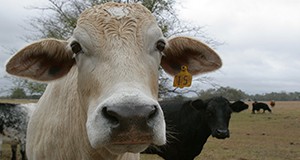 The economic success of beef cow-calf operations depends on the production of one healthy calf per cow per year. To achieve this goal, cow-calf producers need to overcome several obstacles related to the cow, bull, and offspring. Over the last four decades, several advances in reproductive biotechnologies, such as artificial insemination (AI), synchronization of estrus, and fixed-time AI (TAI), have allowed producers to improve the genetic traits of their cattle and shorten the lengths of both the breeding season and subsequent calving season, which can lead to increased overall profitability of cow-calf production systems. This 5-page fact sheet discusses benefits of synchronization and TAI use, obstacles that hinder adoption of reproductive biotechnologies, objectives of the Beef Reproduction Task Force, and factors that can affect the success of TAI programs. Written by Vitor R. G. Mercadante, Darren D. Henry, Francine M. Ciriaco, Pedro L. P. Fontes, Nicky Oosthuizen, and G. Cliff Lamb, and published by the UF Department of Animal Sciences, January 2016.
The economic success of beef cow-calf operations depends on the production of one healthy calf per cow per year. To achieve this goal, cow-calf producers need to overcome several obstacles related to the cow, bull, and offspring. Over the last four decades, several advances in reproductive biotechnologies, such as artificial insemination (AI), synchronization of estrus, and fixed-time AI (TAI), have allowed producers to improve the genetic traits of their cattle and shorten the lengths of both the breeding season and subsequent calving season, which can lead to increased overall profitability of cow-calf production systems. This 5-page fact sheet discusses benefits of synchronization and TAI use, obstacles that hinder adoption of reproductive biotechnologies, objectives of the Beef Reproduction Task Force, and factors that can affect the success of TAI programs. Written by Vitor R. G. Mercadante, Darren D. Henry, Francine M. Ciriaco, Pedro L. P. Fontes, Nicky Oosthuizen, and G. Cliff Lamb, and published by the UF Department of Animal Sciences, January 2016.
http://edis.ifas.ufl.edu/an324

